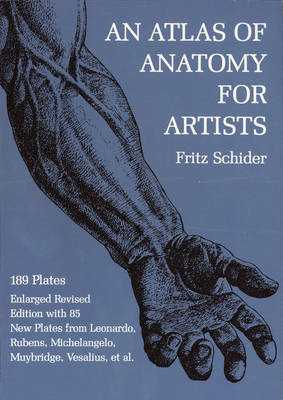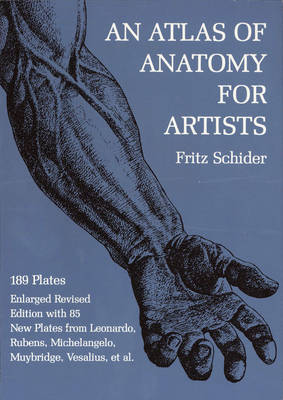
- Afhalen na 1 uur in een winkel met voorraad
- Gratis thuislevering in België vanaf € 30
- Ruim aanbod met 7 miljoen producten
- Afhalen na 1 uur in een winkel met voorraad
- Gratis thuislevering in België vanaf € 30
- Ruim aanbod met 7 miljoen producten
Zoeken
An Atlas of Anatomy for Artists
189 Plates: Enlarged Revised Edition with 85 New Plates from Leonardo, Rubens, Michelangelo, Muybridge, Vesalius, Et Al.
Fritz Schider
€ 27,45
+ 54 punten
Omschrijving
This new and enlarged third edition contains a new section on hands, selected by Heidi Lenssen; a wide selection of illustrations from the works of Vesalius, Leonardo, Goya, Ingres, Michelangelo, and others, newly augmented with 10 plates from Cloquet's "Anatomie de l'Homme" and 16 illustrations from Boscay's "Anatomy"; 28 photographs of growing children from the research work of Nancy Bayley, plus 6 action studies (each consisting of about 30 photographs) from Muybridge; a bibliography compiled by Adolph Placzek; a total of more than 350 illustrations, showing the placement, function, and characteristics of every anatomical detail of importance to the artist.
For more than forty years, this book has been recognized as the most thorough reference work on art anatomy in the world. Now, it recommends itself even more strongly to the serious artist as an important study aid. Among its features are: (1) Clear, systematic presentation, taking the student step by step from the simpler skeletal drawings at the beginning to the more complicated body-in-action sketches at the end. (2) The juxtaposition of anatomical drawings and life photographs, making it easy to compare the inner structure of the body with its outer form. (3) Cross-section drawings that give the artist a thorough understanding of the relation of the muscles to each other, to the bone structure, and to the internal organs of the body. (4) Anatomical action drawings that reveal the interplay of muscles and skeleton in different positions. (5) The comparative proportions of the male, female, child, and adolescent. (6) A supplementary text on important features of each anatomical position, including the action of the muscles and their origin.
"I recommend Fritz Schider's Atlas of Anatomy for Artists to those who wish to increase their understanding of the human figure." -- Robert Beverly Hale, Lecturer on Anatomy, Art Students League of New York. Adopted by Pratt Institute, Cleveland School of Art, Art Students League of New York, and others.
For more than forty years, this book has been recognized as the most thorough reference work on art anatomy in the world. Now, it recommends itself even more strongly to the serious artist as an important study aid. Among its features are: (1) Clear, systematic presentation, taking the student step by step from the simpler skeletal drawings at the beginning to the more complicated body-in-action sketches at the end. (2) The juxtaposition of anatomical drawings and life photographs, making it easy to compare the inner structure of the body with its outer form. (3) Cross-section drawings that give the artist a thorough understanding of the relation of the muscles to each other, to the bone structure, and to the internal organs of the body. (4) Anatomical action drawings that reveal the interplay of muscles and skeleton in different positions. (5) The comparative proportions of the male, female, child, and adolescent. (6) A supplementary text on important features of each anatomical position, including the action of the muscles and their origin.
"I recommend Fritz Schider's Atlas of Anatomy for Artists to those who wish to increase their understanding of the human figure." -- Robert Beverly Hale, Lecturer on Anatomy, Art Students League of New York. Adopted by Pratt Institute, Cleveland School of Art, Art Students League of New York, and others.
Specificaties
Betrokkenen
- Auteur(s):
- Uitgeverij:
Inhoud
- Aantal bladzijden:
- 224
- Taal:
- Engels
- Reeks:
Eigenschappen
- Productcode (EAN):
- 9780486202419
- Verschijningsdatum:
- 1/06/1957
- Uitvoering:
- Paperback
- Formaat:
- Trade paperback (VS)
- Afmetingen:
- 184 mm x 259 mm
- Gewicht:
- 508 g

Alleen bij Standaard Boekhandel
+ 54 punten op je klantenkaart van Standaard Boekhandel
Beoordelingen
We publiceren alleen reviews die voldoen aan de voorwaarden voor reviews. Bekijk onze voorwaarden voor reviews.











